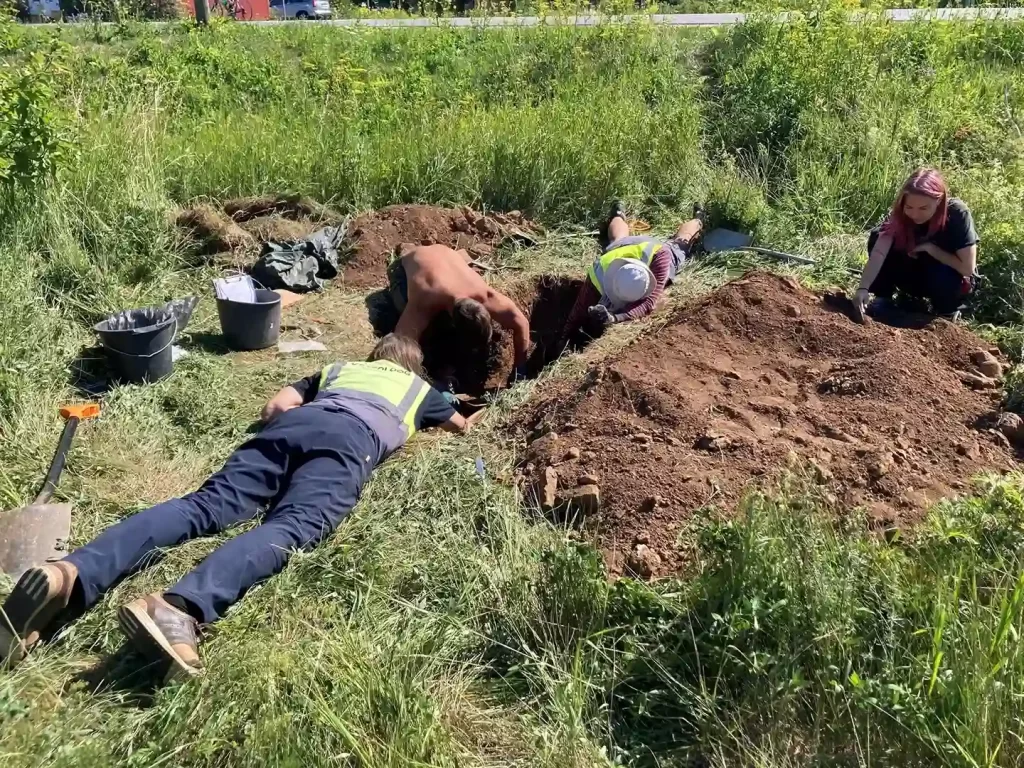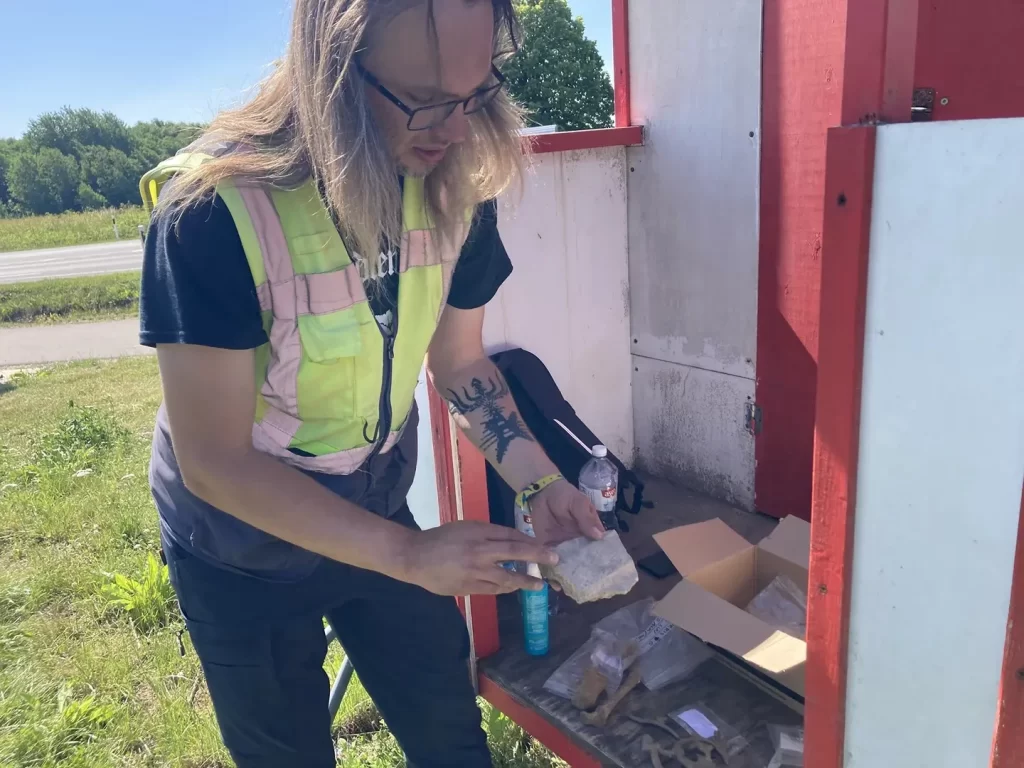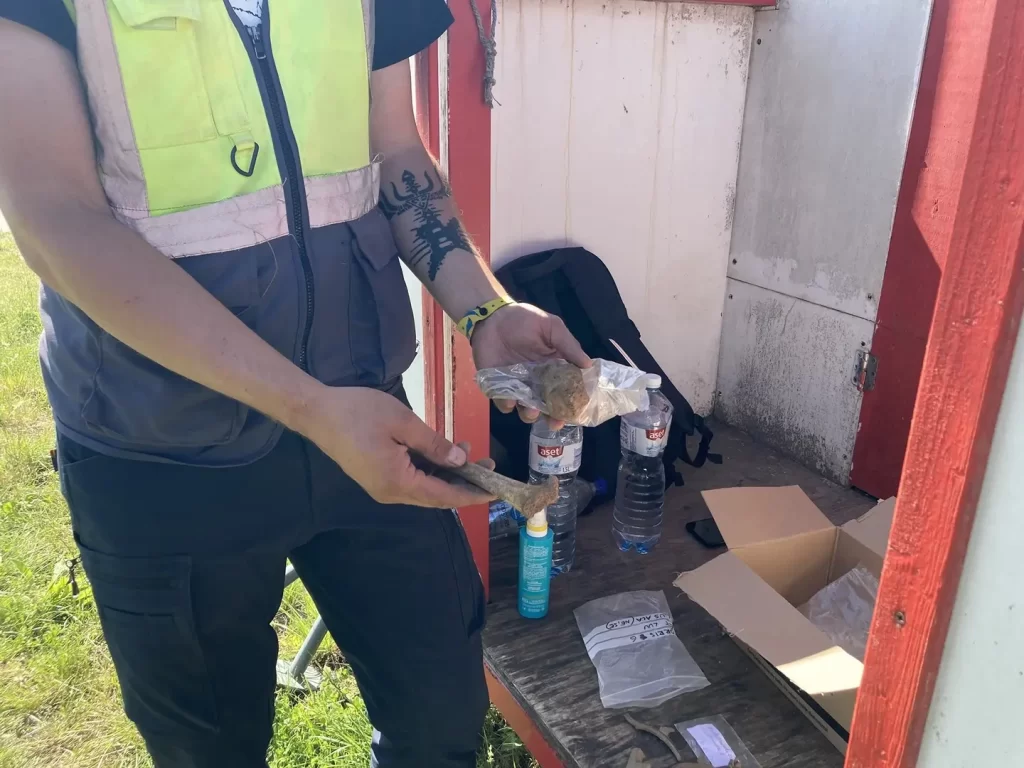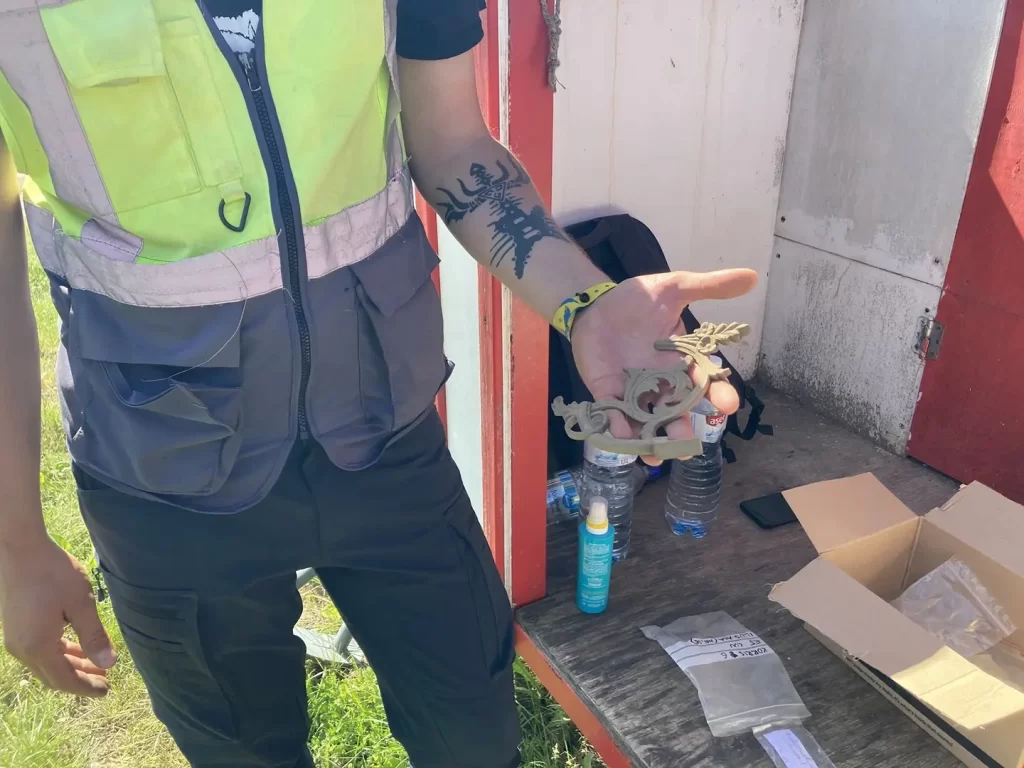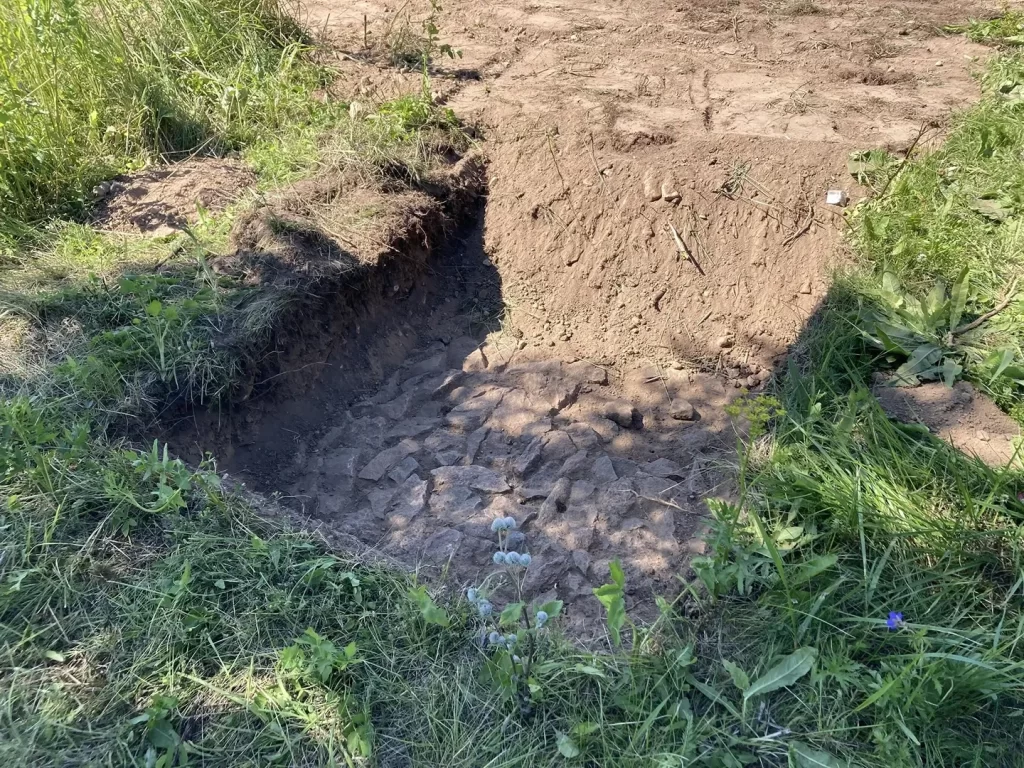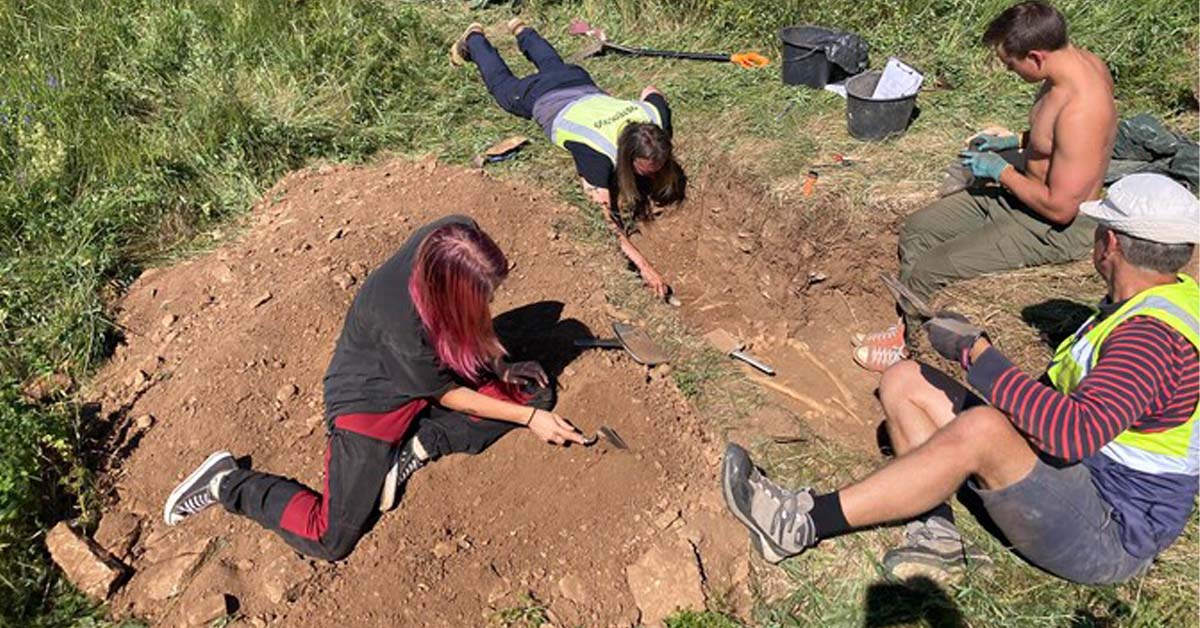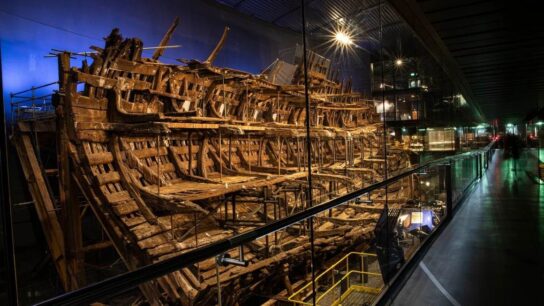Archaeologists Uncover Hidden Secrets at Peeterristi Church Site in Ida-Viru County
In Ida-Viru County, archaeologists are investigating the site of Peeterristi Church and what may be a cemetery. The work is being carried out as part of preliminary studies in relation to the widening of the Narva highway.
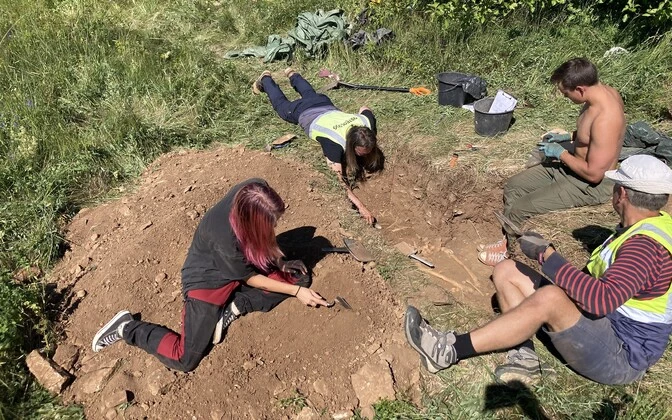
Preliminary archaeological investigations in Peeterristi, Ida-Viru County, will provide insights into what hidden secrets may lie ahead during construction work on the planned four-lane Tallinn-Narva highway, says bioarcheologist and bone specialist Martin Malve who is leading the investigation.
The archaeologists have been excavating the site of Peeterristi Church, which was destroyed in 1944 during the Second World War. They have also been looking for, what could have been a cemetery.
“It’s important that we know where the cemetery was and where the church was, so we don’t build a road through the graves. It’s also important to get an idea of how much archaeological work needs to be done here before the roadworks can start,” Malve said.
Malve added, although roads have been built in Peeterristi before, no prior archaeological work had been carried out.
“What is interesting is that the church was erected here relatively recently, but we know very little about it. The preliminary studies are already providing us with a lot of valuable new information about the area,” said the bioarcheologist.
For example, a section of the old highway’s stone road has been uncovered during the work. The research is complicated by the fact that much of the soil in the area has already been scattered during previous roadworks.
Last Thursday, the team of archaeologists unearthed the skeleton of an adult man. “The reason we’re excavating it as part of our preliminary research is because we want to know if it’s a cemetery burial. As this site was also at the center of battles during the Second World War, soldiers from the Second World War also died here. So we need to be sure that this is indeed a 19th century and early 20th century cemetery,” Malve explained.

As the area has been subject to few previous studies, many questions remain, said Malve, adding that there was probably another church there before the stone one built in 1808 by Baroness Dorothe von Arpshofen in memory of her husband.
“The surviving written sources for this site also date back to the Swedish period and show that this is a long-standing burial site, which may have first been used as early as the 16th century. However, we have no firm evidence of this. We have been over the site using metal detectors, but found no evidence.
All we found were fragments of a 19th century church, but unfortunately no older churches,” Malve said.
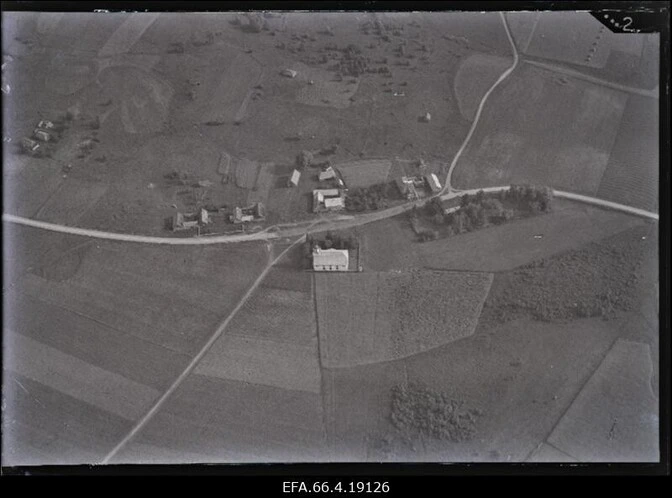
Local people say that the Tallinn-Narva highway was built on the site of the Peeterristi Church altar, and the archaeologists are not ruling this out as a possibility.
“All we found by the road was a meter-high pile of church rubble – a pile of limestone with mortar and also some bricks and brass ornaments.
But we did not find the church itself. It may indeed be true that folklore does not lie and that the road was built through the church,” said Malve.
Anyone who has more information about the Peeterristi area is encouraged to contact the archeologists at the University of Tartu.
